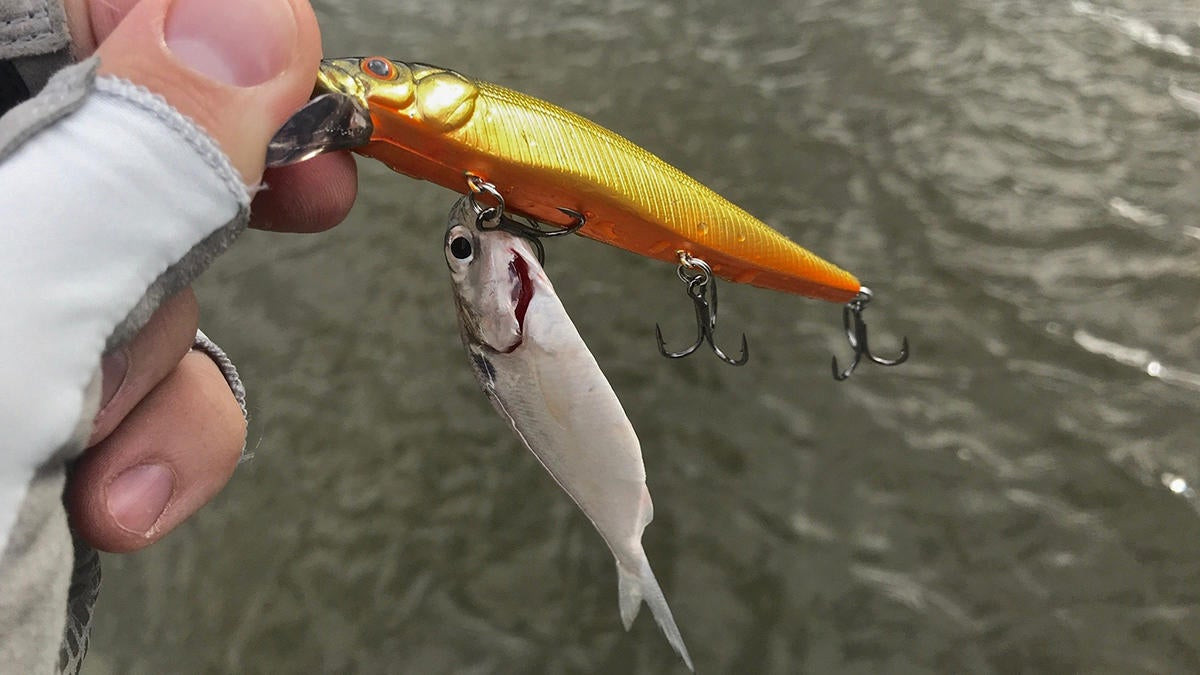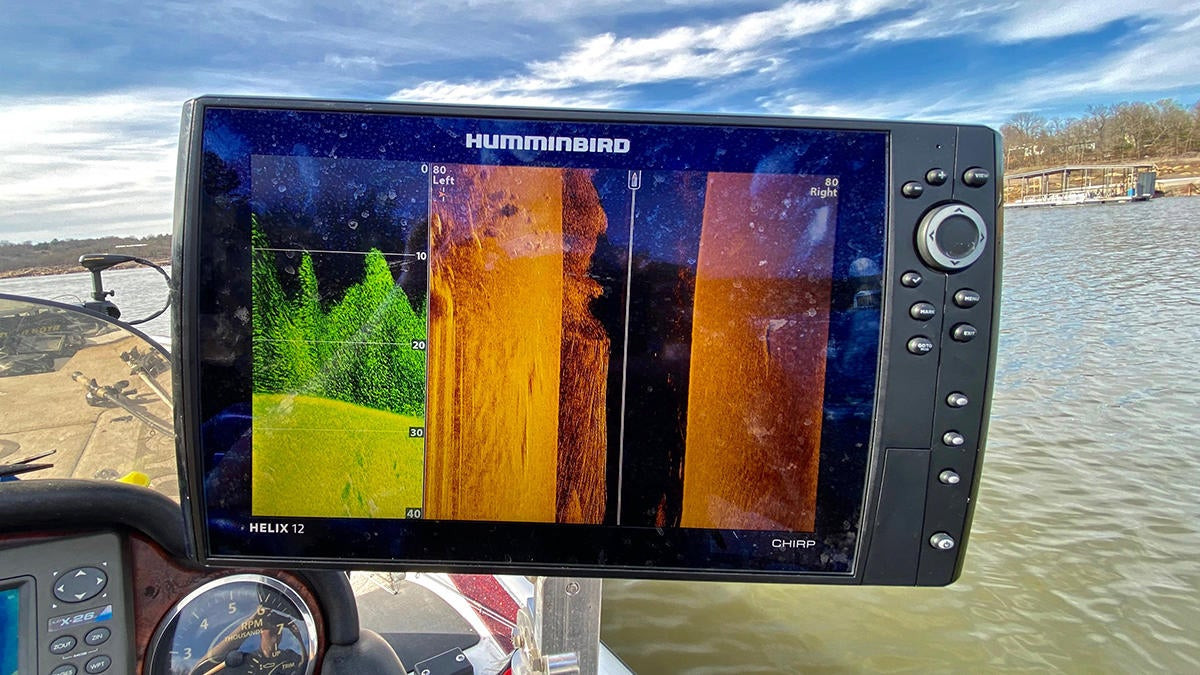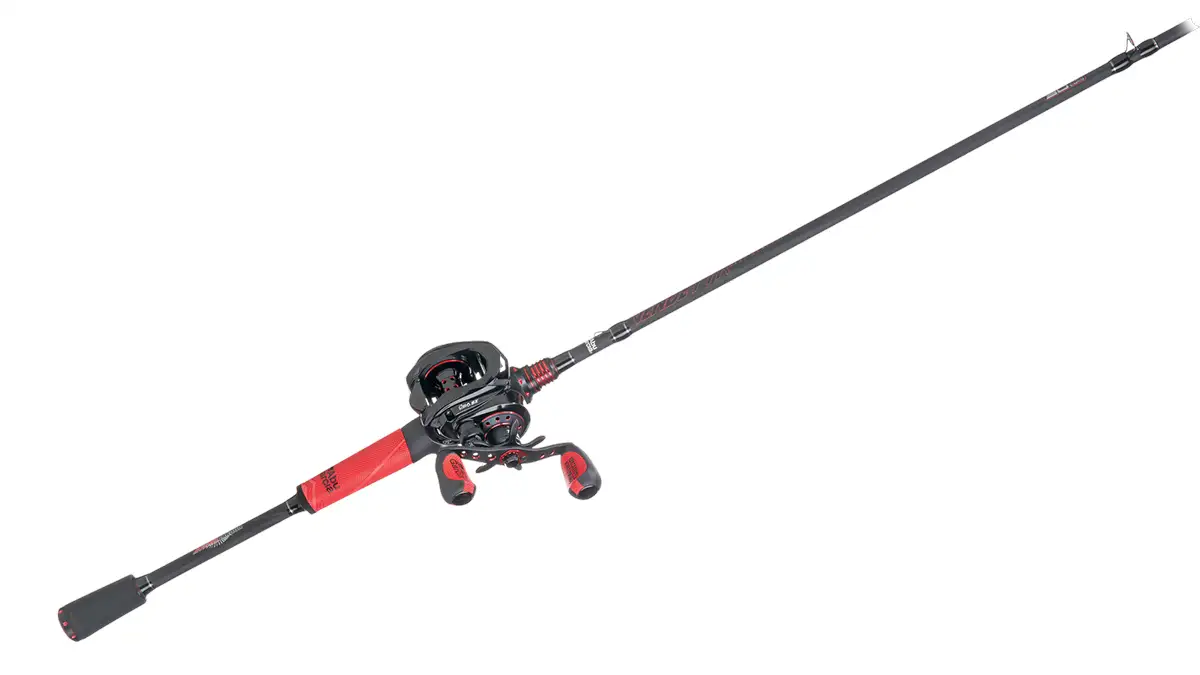“Find the baitfish and you’ll find the bass.”
We’ve heard this saying time and again. For the most part it’s absolutely true, but catching bass relating to baitfish isn’t always so simple. If giant schools of baitfish like shad means bass are around, how can they be so tricky to catch? Can there be such a thing as too much bait?
The truth is, outcompeting the real thing and catching bass in a spot with swarms of shad can be downright difficult. If you fish often I’m sure you’ve found yourself in this scenario – you’re surrounded by what seems like a million baitfish and you know bass are in the area, but it’s still tough to get a bite. Whether it’s a main lake point or in the back of a pocket, this situation can play out anywhere.
I deal with this scene where I live in northeast Oklahoma on a regular basis and my day job affords me the ability to work around many professional anglers who have helped me learn these four tricks that’ll help you deal with an overabundance of baitfish.
Wait them out
Much like your dad or grandpa might’ve told you, patience may be a fisherman’s best friend. Especially when you’ve found an area with an oversupply of baitfish. Many anglers, myself included, have a bad habit of always seeking greener pastures on the lake. If a few minutes go by without a bite we run to a new spot, even if the area has everything we’re looking for.
Bass relating to roaming schools of shad have feeding windows. They are opportunistic predators, so bass are always willing to feed, but they are more aggressive in certain windows of time. Staying patient and enduring these slow periods can be extremely rewarding if you are there when the fish fire up.
I faced this exact situation a few weeks ago. The water temperature was in the upper 40s but it was a warm and sunny day. I found a small pocket teeming with shad, and even though the water was cold I watched a few bass eat shad flicking on the surface. I thought I was about to load the boat. 45 minutes later, I had caught one dink on a Rapala Shad Rap and was scratching my head. I tried every bait I could think of but couldn’t get another bass to bite.
Out of pure stubbornness, I decided to re-fish the pocket with a Strike King KVD Jerkbait. Somewhat surprisingly I caught a 5-pounder, immediately followed by two other nice keepers. I had thrown that same bait 150 times just a few minutes prior, and I genuinely believe those same bass were there the entire time. Nothing changed; patience and persistence just paid off.
Check them later
Patience is a virtue, but sometimes you can’t force the fish. Leaving the area and letting it rest for a while can drastically change the number of bites you get. If you are unable to get the bass to eat, be mindful of where the bait was located and come back to them later.
We see this play out each year during the shad spawn, when bass feeding on swarms of shad seem easy to catch in low-light conditions but leave us scratching our heads throughout the rest of the day. The same sequence of events occurs with bass roaming near baitfish no matter the time of year.
Something like a change in wind direction or having a little cloud cover roll in can drastically change a fish’s mood and start a feeding frenzy in an area that seemed dormant a few hours before. The presence and aggressiveness of birds in the vicinity of the baitfish is another thing to watch for. If you notice seagulls getting active around a large school of shad or herons setting up on the shoreline, it’s a good idea to give that spot another try.
Use your electronics
Electronic tools like the Hydrowave H2 and Garmin Panoptix LiveScope are another way to up your chances of catching bass relating to large schools of baitfish. Professional anglers like Kevin VanDam have been using the HydroWave H2 to excite otherwise inactive bass around the country for years.
“If you’ve got bass and bait in the same vicinity, that’s when the HydroWave can be a perfect trigger to set them off,” VanDam said.
A HydroWave emits a wide array of different noises mimicking things like bass feeding on baitfish or active baitfish schooling on the surface. Oftentimes these noises will ignite competition amongst a school of passive bass and cause them to start feeding.
Garmin’s LiveScope technology has been another game changer when it comes to locating and targeting individual fish; specifically when they are suspended around structure or baitfish. There have already been several major tournaments won by anglers utilizing this technology in 2020 alone.
Panoptix LiveScope allows an angler to pinpoint the location of a single bass amongst a school of shad or other baitfish and make targeted casts right to the fish. It’s awful hard for a bass to resist a swimbait, spoon, umbrella rig or jerkbait if you can drop it right in front of their face, even if they aren’t actively feeding.
Show them something different
Sometimes the best way to catch bass in an area with a plethora of baitfish is to throw a lure that looks vastly different. Major League Fishing pro Matt Lee suggests trying your favorite straight-tail soft plastic worm or something resembling a craw. When there is no shortage of the real thing, it can be unnecessarily difficult to trick a bass with a shad-imitating lure.
“It can be so hard to fool bass when they get dialed in to shad and have thousands of baitfish surrounding them,” Lee said. “If there are bass in the area but I can’t get them to eat something mimicking a shad I will throw a craw colored 6th Sense Crush Flat 75x crankbait or drag a 6th Sense Divine Shakey Worm. I can’t tell you how many Smith Lake spotted bass I’ve caught on a shaky head even when they are primarily feeding on baitfish. You just gotta show those jokers something different.”
Even though they aren’t actively feeding, bass usually won’t completely leave an enormous school of shad. They’ll hunker down underneath them or hole up in a nearby brush pile.
This is when a jig, shaky head or crawfish crankbait can be extremely productive. Lee explained a little color in the water only improves this bite and is definitely something to keep in mind if you face this scenario on your next trip to the lake.
















